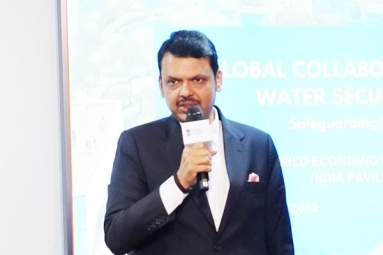Indian Origin Student Designs Sweatshirt for Athletes That Cools Body and Uses Sweat to Generate Power
May 27, 2019 12:42
(Image source from: News Track English)
A 17-year-old Indian origin boy Rohit Nemani, who has been in Cox Mill High School varsity’s cross-country team for three years, wants to help athletes by designing a new sweatshirt that produces a cooling effect when it dries up.
Sweat is not just water, it also contains salts, which are electrically charged particles.

According to a Science News for Students report, Nemani is sure that if he can weave electrodes into the fabric of a shirt, “he could use those salts to generate electricity.”
That electricity and then can be used to power an actively cooling fabric that Nemani hopes to put into the body of the sweatshirt. “When it cools you down, you sweat less,” Nemani said. “That, in turn, will turn off power to the fabric. Then, as someone sweats more again, the electricity returns and the cooling fabric goes back to work,” the report says.
According to the report, Nemani used a 3-D printer to print carbon and to attach zinc washers onto his fabric - allowing the fabric to conduct electricity.
“The inner cotton layer soaks up this moisture from the skin by what’s known as capillary action. The next layer is polyester. Being hydrophobic (Hy-droh-FOH-bik) - it repels water. That spreads the sweat out, allowing it to come into contact with the carbon and zinc electrodes. Salts in the sweat react with the carbon and zinc pressed into the shirt, producing tiny amounts of electricity,” according to the report.
Half a milliliter of sweat (a tenth of a teaspoon) can produce about 0.6 to 0.7 volt of electricity, Nemani found. By linking electrodes in this sleeve together with metallic yarn, Nemani got about 1.7 volts off his sleeve.
Nemani displayed a sample of his new sweatshirt system to the Intel International Science and Engineering Fair in Phoenix, Arizona. He has built only the one sleeve till yet and hopes to weave together the electricity-conducting sleeve and active-cooling fabric into a full, prototype shirt.
By Sowmya Sangam














